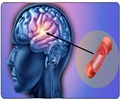Neurologists have debated as how to help prevent stroke patients from suffering a second stroke.

Many neurologists had suspected that blood pressure should be left high in this group of patients because doctors thought high blood pressure might force blood around the blockage and through collateral vessels, which would be beneficial and, therefore, reduce risk of stroke.
But research from William Powers, MD, the H. Houston Merritt Distinguished Professor and Chair of the Department of Neurology, shows that keeping blood pressure high leads to a four-fold increase in the risk of stroke. The study was published in the journal Neurology March 26.
"Up until now doctors would say to patients, ‘well, we think you should do this or we think you should do that,'" Powers said. "But our paper provides the first data that show how patients with poor collateral vessels should be treated."
Andrew Southerland, MD, a neurologist at the University of Virginia who was not involved in the study, said, "This paper clears up a murky question about how to manage blood pressure in these patients. It's a pivotal study in our field."
After a stroke, collateral vessels can help blood flow to an area of the brain that's cut off from its normal blood supply due to a blocked blood vessel. In the 1980s, Powers led PET scan studies that characterized the importance of these collateral vessels. His team showed that patients with poor collateral flow faced six times the risk of a suffering a second stroke than did patients with good collateral vessel formation. But how to treat those patients with poor collaterals remained debatable.
Advertisement
Using PET scan data of 91 patients with poor collateral blood flow, Powers found that 40 had an average blood pressure of less than 130/85 during the two years after stroke. Fifty-one had blood pressures above that. Powers then found that just three of the 40 patients with "normal" blood pressure had a second stroke. But 10 of the 51 patients with high blood pressure suffered a second stroke.
Advertisement
"That's impressive," said Southerland. "That's a huge absolute risk reduction that we don't often see in this field."
Powers said, "The idea that you should let blood pressure ride high to prevent a second stroke in these patients turns out to be completely wrong. You should treat their blood pressure just like you should treat everybody else who had a stroke to reduce the risk of a second one."
This study was supported by grants through the National Institute of Neurological Disorders and Stroke.
Dr. Powers recently received the Feinberg Award from the American Stroke Association for significant contributions to patient-based research on stroke. Read our feature, The Science of Stroke, to learn more about Dr. Powers and his research findings that span a 34-year career.
Source-Newswise















